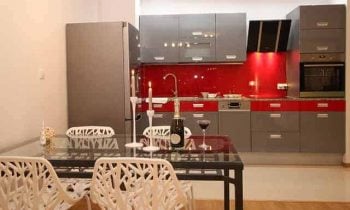A well-lit dining room can greatly contribute to the quality of meals and conversations your family or friends will have during dinners. The correct lighting setup can contribute to your dining room’s overall mood as well as its functionality. It can make your guests feel at home and relaxed and make for a great bonding time with your family. Here are some tips to achieve these effects.
Focus lighting on the dining table
The ultimate design rule to remember when styling a dining room is to create an atmosphere around the dining table. To do this you should focus lighting around the table itself as well. Doing so will make it seem that the rest of the room recedes into the background.
Begin by choosing a chandelier or other low-hanging lights to primarily illuminate your dining table. Remember to keep a 36-inch space between the bottom of the light and the table. You should make sure to match the design of the light fixture with the rest of your dining room furniture. For example, chandeliers will look good with round tables while linear fixtures go together well with rectangular tables. Another tip is to install multiple pendant lights arranged to complement the dining table’s shape.
Light intensity
Another important component of dining room lighting is light intensity. Designers have developed a useful formula to determine the perfect wattage for your lights. First, multiply the width (in feet) by the length (in feet) of the dining room. Next, multiply the answer to the first by 40. The collective output of all light sources in your dining room should be close to 12,000 lumens. Remember that the best light for entertaining in the evening is a low-level but warm light as it creates a warm ambiance. This lighting also complements people’s skin and can make them look more attractive.
You can also add light versatility by installing a light dimmer in your dining room. This will allow you to use your dining area for different purposes even at night. Using plenty of light, your kids can use the dining table to work on their homework on some nights.
Layering lights
Another way to create an ambiance in your dining room with lights is to layer them. There may be times when you need stronger lights or times when you want to eliminate glaring light. You can strike a balance between the two by layering the lights of table lamps, wall lights and overhead lights.
Having multiple light sources can give you more control over the overall lighting of your dining room. However, getting the perfect lighting can take a lot of hits and misses and experimentation. You can mix together warm light and cool light to achieve a normal white balance.
This option can also replace light dimmers if you don’t want to invest in one.
Turn your dining room into the ultimate entertaining place by focusing on flattering, functional and ambient lighting. Start by lighting your dining room table, the centerpiece of the room, with appropriate lighting fixtures. Then, turn your focus on the light intensity and warmth.
Remember the formula designers recommend to determine how much light you need depending on the size of your dining room. Light dimmers can also add versatility to the lights you currently have. Last, don’t be afraid to put together different light sources and tones to achieve a certain ambience and retain functionality.

 5 ways to make a Small Living Room feel spacious
5 ways to make a Small Living Room feel spacious Budgeting Bathroom remodeling
Budgeting Bathroom remodeling Kitchen remodeling step by step
Kitchen remodeling step by step Dining room Feng Shui Dos and don’ts
Dining room Feng Shui Dos and don’ts